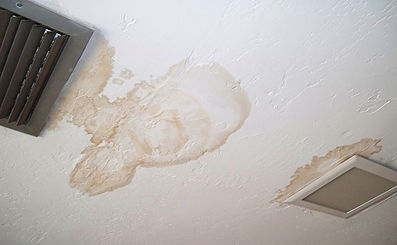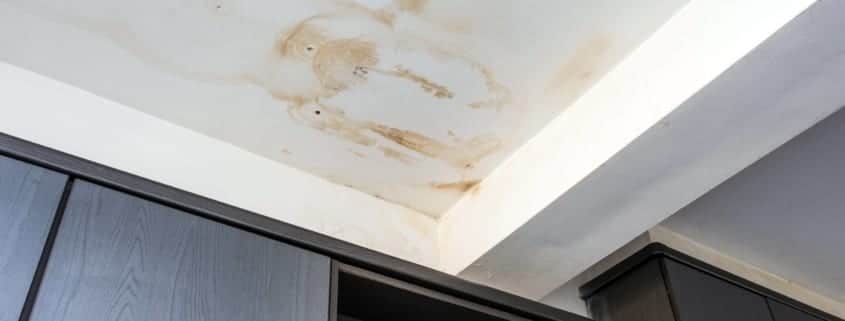When Walls Speak - Deciphering And Fixing Water Stains
When Walls Speak - Deciphering And Fixing Water Stains
Blog Article
The content which follows pertaining to Water Stains on Walls is relatively stimulating. Don't skip it.

Water stains on wall surfaces are not pleasurable to the eyes. In some cases it appears nearly unavoidable to experience water discolorations on wall surfaces in homes.
Home owners residing in moist areas frequently take care of the worry of water spots on walls. But that does not have to be the case for you. With all-around and also precise details on the causes of water discolorations as well as punctual repair work procedures, you will constantly be a step ahead of such incidents. This short article promises to be a practical guide for you.
3 Common Root Causes Of Water Discolorations on Walls
In contrast to common belief, water stains on walls do not constantly stem from bad structure products. There are several root causes of water discolorations on walls. These consist of:
Poor Water drainage
This will avoid water from leaking right into the wall surfaces. This links to too much moisture that you notice on the wall surfaces of your structure.
So, the leading cause of wet walls, in this instance, can be a poor drainage system. It can additionally result from inadequate monitoring of sewer pipelines that run through the building.
Damp
When hot moist air consults with dry chilly air, it triggers water beads to base on the walls of buildings. This occurs in bathroom and kitchens when there is vapor from food preparation or showers. The water droplets can stain the surrounding walls in these parts of your home and also infect various other areas.
Wet or condensation influences the roof covering as well as walls of buildings. This causes them to appear darker than various other locations of the residence. When the wall surface is wet, it produces a suitable setting for the development of microorganisms and fungis. These may have damaging effects on health, such as allergic reactions as well as respiratory conditions.
Pipeline Leaks
Most houses have a network of water pipelines within the walls. It constantly enhances the viability of such pipes, as there is little oxygen within the wall surfaces.
Yet, a drawback to this is that water leak impacts the wall surfaces of the building and also causes prevalent damages. A telltale sign of defective pipelines is the appearance of a water discolor on the wall surface.
Water Spots on Wall Surface: Repair Tips
House owners would usually want a quick fix when taking care of water spots. Yet, they would certainly soon recognize this is disadvantageous as the water stains persist. So, below are a few valuable ideas that will certainly lead you in the repair of water stains on walls:
Pro Idea
A houseplant in your house additionally raises its moisture. If the residence is currently moist, you might desire to present houseplants with marginal transpiration. An instance of appropriate houseplants is succulents.
Final thought
No one desires to have water spots on wall surfaces in their house, it can happen to the best of us. This article gives you utilize, as you currently understand exactly how to handle this problem if it does take place.
It is constantly best to recruit professional services to aid deal with the problems in your home.
In some cases it appears virtually inescapable to experience water stains on wall surfaces in residences.
Contrary to popular belief, water discolorations on wall surfaces do not always stem from poor structure products. There are a number of causes of water discolorations on wall surfaces. The water droplets can stain the bordering wall surfaces in these parts of your home as well as spread to other locations.
Here are a couple of useful pointers that will certainly guide you in the repair service of water stains on wall surfaces:
CHECKING FOR WATER DAMAGE
Water damage can be costly, and it may begin before you even notice the first signs of trouble. Water damage can cause mold and mildew in your walls and floors, which can create an abundance of health concerns for your family. It can also lead to costly repairs of various appliances and general home fixtures. To avoid the pricey consequences of water damage, here are Warner Service’s top 5 places you should check:
The walls – The easiest place to spot the beginnings of water damage is on the walls and ceilings of your home. If water damage is present, there will most likely be water stains, especially around the windows and doorframes, and/or cracks in the drywall. If a stain looks unusual (discolored to brown, black or gray, raised texture), has a swollen appearance or is soft to the touch, contact a professional immediately. The pipes – To avoid water damage, consistently check the pipes in your kitchen (especially the dishwasher and ice maker), bathrooms, laundry room (specifically washing machines) and basement for corrosion, leaks and water stains. Pay special attention to where the pipes connect in your home and the location of caulking around the bathroom fixtures, including toilets, sinks, showers and tubs. Missing or loose caulking and grout could be signs of leaking water. This seepage can also quickly cause mold and rust, so double check your water heater and tank for wet spots on the floor. The floor – Water damage is very easy to spot on the floor. Look for any warping or buckling of the material, especially in the basement. If your home has wood flooring, look for bright white or dark stains. If your home has carpeting, keep it dry and clean. A damp carpet that smells of mold could cause water damage and health problems. To avoid this, consider installing floor pans under your appliances to help prevent damages from small, slow and undetected leaks. The basement and attic – If your basement or attic smells odd check for mold and mildew around the area, especially the valley where the roof meets. While you are inspecting those areas, check for wall cracks, floor stains, rust and dampness in the insulation. If you live in a colder and/or rainier climate, perform routine checks for water damage from melting snow or ice and rain. The exterior – Check the roof for damaged flashing and missing, cracked or curled shingles. There should also be no standing water anywhere outside your home. This could be caused by puddles, leaky rain gutters or hoses, poor drainage, or short gutter spouts. Invest in a sump pump system or water flow monitoring system, and perform routine maintenance on these outdoor appliances to avoid indoor water damage.

I stumbled upon that post on while doing a lookup on the internet. Are you aware of another person who is looking into the niche? Feel free to promote it. We appreciate reading our article about .
Get A Free Quote
Report this page